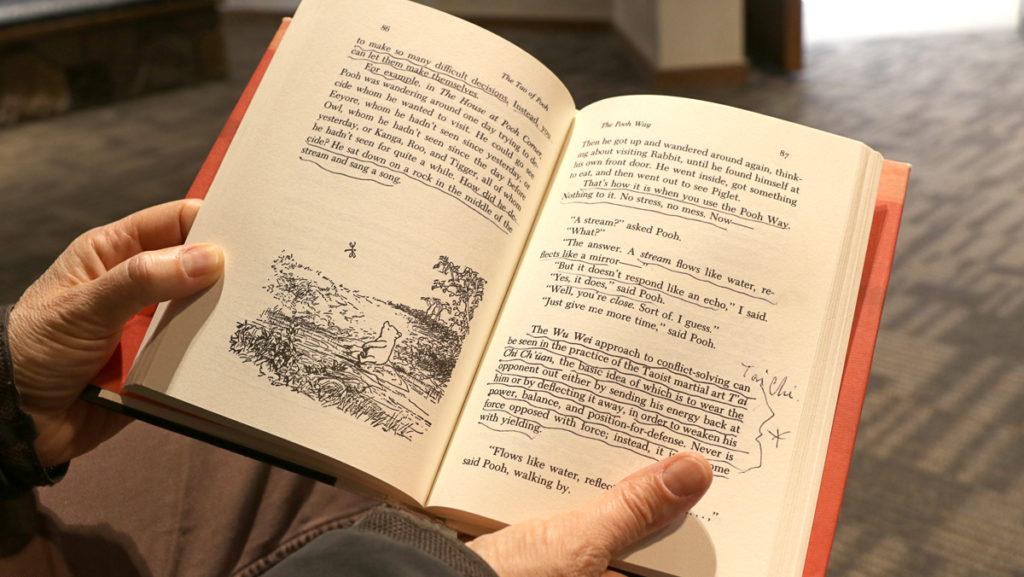It’s a busy time of year for many, and for those of us who live by the academic calendar, this time of year can be particularly fast-paced and filled with deadlines, end of semester meetings, assignments due, assignments to grade and the hustle of the holidays — all on top of the fact that we’re living in a social world that moves with unprecedented speed. It all adds up to more tasks than time, and for many, increased levels of stress. Most, if not all of us, start to look increasingly like “Bisy Backson” of Benjamin Hoff’s Taoist classic “The Tao of Pooh.”
If you haven’t read the book, and I recommend you do, the character Rabbit illustrates the “Bisy Backson” principle as one who “never lets things come to him but always [goes] out [to] fetch them,” one so intelligent and self-important that he can’t even allow himself to sit down. He is so busy do-ing that there’s no time for be-ing. Running from place to place, never able to be still — “Busy! Back soon!” Winnie the Pooh, on the other hand, exemplifies the principles of being and stillness. Together, these characters represent core dualities of human life — action/inaction, speed/slowness, movement/stillness, reason and intellect/heart and compassion — that work together to maintain harmony.
Particularly this time of year, many people find these forces noticeably out of balance in their lives. As a result, an increasing number of people worldwide are turning to age-old practices such as meditation, Chi gong, yoga and others that cultivate mindful states, connectivity and engagement with the world. These practices minimize the bias, judgment, worry, criticism of self and other things that lead to stress and divisiveness. Thich Nhat Hahn, Buddhist monk, activist and teacher, describes mindfulness as “a serene encounter with reality.” By observing the mind’s running narrative that jumps from past to future, here and there like a monkey in the trees, awareness of this “monkey mind” allows practitioners to experience the stillness that lies beneath. It allows them to see their biases and question the validity, utility and wholesomeness of their thoughts. In short, these practices facilitate the development of self-awareness, minds that tend toward stillness and hearts that grow in compassion. They facilitate a clearer seeing of how the inner world shapes the outer world.
In recent years, both public and higher education have increasingly embraced these practices as tools to help students navigate the rigors of academic life. This includes an enhanced ability to focus and learn, as well as manage habits of mind that result in stress, anxiety and depression and interfere with academic success. Mindfulness practice teaches that we may not always be able to change outside forces that make us feel stressed, anxious or reactive, but changing how one thinks about and relates to outside forces can reduce stress reactions. With that, life’s vicissitudes can be responded to with more clarity, insight and wise action.
Engaging with practices that enhance mindfulness are not just important for getting through college and managing stress. For many, these practices are viewed as important, even necessary, keys for facing the challenges that threaten our very existence. To sustainably and meaningfully manifest the things we want and need to see in the world like respect, compassion and stewardship, change needs to come from within the minds and hearts of each and every human. So in the midst of all life’s busyness, perhaps we can take some moments to encourage our inner, intelligent Rabbit to sit quietly for a spell beside his wise friend, Pooh.














